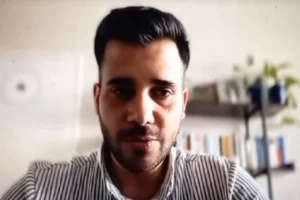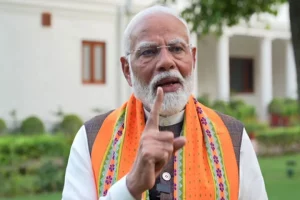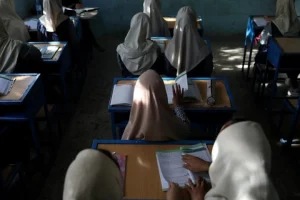When the Islamic State Hind Province (ISHP) launched a magazine called Sawt Al Hind, or Voice of Hind, just after Delhi riots in 2020, it aimed to build a narrative of anger against anti-Muslim incidents in India. Two years later, it died an unsung and unread death, with no reader and recipient of its narrative in mainland India.
In Kashmir, the group certainly invigorated a section of pro-militancy elements, but even there, it remained a damp squib. Rejected Sawt Al Hind, the main propaganda outlet of ISHP, abruptly stopped publishing content after its May 2022 issue.
The failure of ISHP propaganda machinery loudly heralds how Indian Muslims have rejected any attempt to radicalise them through print or online indoctrination in jihadist ideas. While neighbouring Pakistan continues to struggle to prevent its youths from being affected by extremist ideologies, India has been heaving sigh of relief for many recent years.
Pro-ISIS telegram channel – Sawt Al Hind releases the 24th issue of Voice of Hind. This edition slams Hindutva leaders in the country. #ISIS #Wilaayah_AlHind #ISHP #VoiceOfHind #SawtAlHind pic.twitter.com/xvaEI4gfj9
— Pooja Mehta (@pooja_news) February 2, 2022
The major terror arrest in India was in 2016 when some youths hailing from Sambhal, a West UP town, were nabbed for being Al Qaeda operatives and running a network of disseminating literature of the terror group. Seven years later, they have been freed and the books they allegedly distributed are found to be available like all other books online for long before they were arrested.
Similarly, when the kingpin of Al Qaeda in Indian Subcontinent (AQIS), Maulana Asim Umar, was killed in Afghanistan, it was revealed that he hailed from the same Sambhal town. However, his death didn’t spark any sympathy and no note of tribute was reported to be circulated anywhere in India, let alone his hometown.
Two years ago on this day, the founding Emir of al-Qaeda in the Indian Subcontinent (AQIS), and the highest ranked Indian jihadist ever, Maulana Asim Umar was killed in US-Afghan raid in Helmand, Afghanistan. 40 civilians including children and women were killed in the raid too. pic.twitter.com/WqmcRllNe2
— ɨռȶ3ʟ_ɢֆ (@1nt3l_GS_N3ws) September 23, 2021
Unlike other countries, the forms of terrorism in India are varied and complex. The government has identified and banned 42 terrorist organisations, Islamist, separatist, and communist in their doctrinal beliefs.
More than Islamist terror, militant attacks linked to Maoist and Naxal groups have been witnessed in recent years.
No Terror Despite Threats
Apart from the resurgence of Al Qaeda and ISIS, the return of Taliban in Afghanistan marked a major power shift towards militant ideology in our neighborhood. Observers of the region and Indian policymakers were alarmed that it could have a domino effect in India, and that too big time. It certainly did, in Kashmir. But as months passed by, even terror in the Valley has been subdued efficiently and the propaganda machinery has been almost completely dismantled.
From India’s perspective, the threat of any direct attacks by the Taliban or its immediate affiliates remains but it is extremely limited. And much like the movement’s previous stint in power in the 1990s, any large-scale mobilisation of Muslims from India to Afghanistan to join the Taliban remains highly unlikely. However, the presence of other groups such as Al Qaeda and its affiliates—particularly Al Qaeda in Indian Subcontinent (AQIS) — as well as local affiliates of Al Qaeda’s ideological competitor, the Islamic State of Iraq and Syria, present multiple challenges to security planners in New Delhi, even though vigilance of Indian agencies on this front has kept threat on the lowest key.
The abrogation of the special status of J&K on August 5, 2019 led many to speculate that there would be a substantial increase in terrorism-induced violence in the region following the decision. However, the security scenario has continued to improve from the preceding years to the extent that Doda was declared a terrorist-free district. In the year following the decision, there has been at least a 30 percent drop in the number of terrorist attacks targeting civilians and the security forces, while bomb defusions and raids on terrorist hideouts have doubled. Arrests of terrorists have also increased by a factor of two.
VIDEO | “We are proud of the fact that Jammu and Kashmir, by and large, is becoming a terror-free region. The next challenge for police, however, would be to launch a drive against drug smuggling and drug abuse,” says DGP Dilbag Singh on law and order situation in Jammu and… pic.twitter.com/b0l1pXPhFa
— Press Trust of India (@PTI_News) September 2, 2023
The success of India against terror has been running for several past years. If we remember Al Qaeda had used the US invasion of Iraq in 2003 as a springboard to recruit, radicalise, and market its ideology — including by attracting members of now defunct Indian groups such as the Indian Mujahideen (IM) and Students’ Islamic Movement of India (SIMI). During the previous UPA government’s 10 years in power, activities of SIMI and IM were frequently in the news. Several blasts were said to have been orchestrated by cadres of these two outfits. But none of their activities have been noted 2014 onwards. While some of their cadres have been convicted of terror charges, the majority of them have been acquitted.
Soumya Chaturvedi, a senior research fellow at India Foundation, agrees that the terror is on decline in India, but she also says that it doesn’t mean that India can afford to blink. “Despite myriad ideological and operational complexities when it comes to terrorist groups active in the country, India is outperforming its peers when it comes to meeting these challenges. However, the fight against terrorism is far from over. Technological advancements and, arguably, new geopolitical alliances also bring with them new terrorist threats. India must be prepared with its military and diplomatic options to nip these threats in the bud,” she said.
India, which figures among top countries on the Global Terrorism Index, has improved its rank 2017 onwards. It clearly tells that the terror is on decline and all its attempts to lure Indian youths have failed.




















